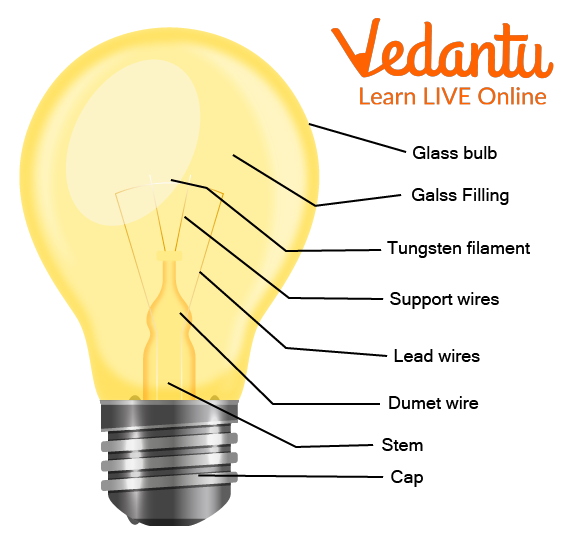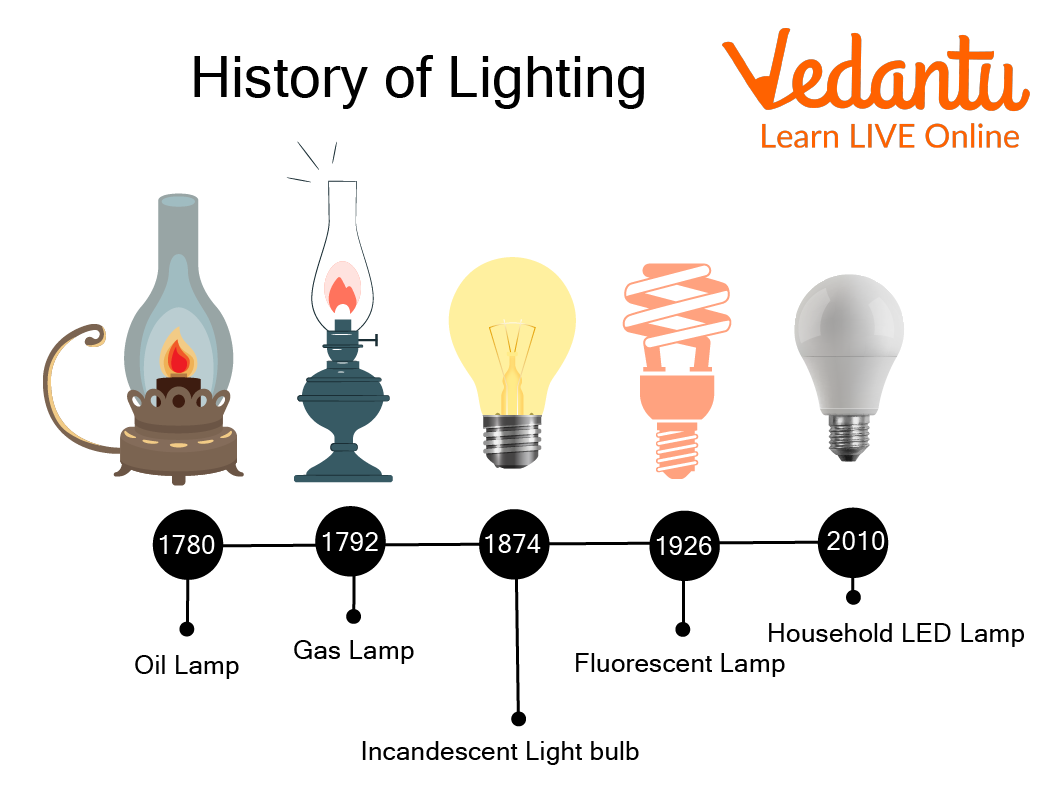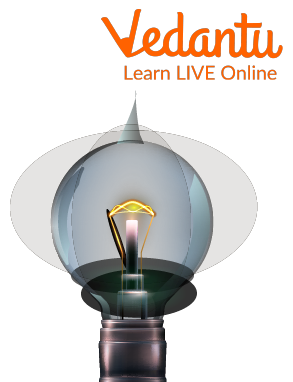




How Does an Electric Bulb Work? Explained for Easy Learning
Have you ever wondered what it is like to not have light at night? Without them, we would be blind in the dark! Well, we wouldn't be having one if it was not for Thomas Alva Edison. We owe Edison for lighting up our world! Without him, we would not have electric bulbs today.

The Light Bulb Structure
The structure of the bulb has changed over the years, but it is still the same idea. Electric bulbs work by conducting electricity through a metal filament that is heated to glowing white hot. The current causes the metal to become incandescent and emits light when it heats up.
What is a Bulb?
Electric lights have taken a significant and prominent place in our daily lives nowadays. It is necessary for lighting things like our homes, buildings, and streets. Today, we have handheld, portable lights that have a 12+ hour battery life. While the technology of today may be different from that of the past, it all began with the development of the incandescent light bulb.
A gadget that glows and emits light when the electric current is put through it is called an electric bulb. For lighting, this straightforward device has been in use for more than a century. This answers the question: what is a bulb?
Early Developments of Bulb
The early developments of bulb attempts to create a functional light bulb were made around 1800. When an Italian scientist "Alessandro Volta" noticed that when a copper wire is linked between the terminals of the battery, it begins to light as a result of the passing of electricity during his research on the construction of an electric battery. Humphry Davy made the initial attempt to build the light bulb in 1802. A carbon electrode (used as a filament) began to glow when he connected the battery terminals to it. Because of how quickly the filament burned, this glow did not linger for very long. His creation is referred to as an "Electric Arc Lamp."

Evolution of Electric Bulbs
Many inventors kept working on the light bulb's research and improvement. According to some historians, 20 innovators tried to create the light bulb before Thomas Edison. Still, none of them succeeded in creating a design that was both inexpensive and long-lasting enough to be sold.
Who invented the bulb?
The filament, a conductor that emits light within a light bulb, was the main issue with early light bulb designs because it didn't last very long and quickly melted. Thomas Edison took the creation of the light bulb very seriously. He began creating and testing new, longer-lasting filaments. He examined a wide range of substances, such as platinum, carbon, and other metals. His carbonised filament had grown and persisted for 14.5 hours. He was persistent in creating a filament that had a longer lifespan. He experimented with more than 3,000 distinct light bulb designs and 6,000 different filament materials.
Finally, he discovered that carbonised bamboo filament may operate continuously for more than 1,200 hours. Later, new filaments took the place of Edison's filaments. Due to its high melting point, tungsten is used as a filament in modern incandescent light bulbs. This led to the discovery of the light bulb.

Electric Bulb Images
Uses of the Electric Bulbs in Daily Life
The following are the uses of the electric bulbs in daily life:
It is utilised in movable lighting fixtures like table lamps.
It is used in automobile headlights and vehicle lights.
It is used in both domestic and industrial lighting.
It is used in lighting for decorations and advertisements.
Disadvantages of Electric Bulbs
The disadvantages of the electric bulb are as follows:
It uses too much energy and emits a warm light.
Increased running costs are needed.
It should be handled carefully because it is fragile and made of glass.
Mercury within a broken light bulb can escape as vapour or tiny droplets that could land on neighbouring items. Mercury exposure is dangerous.
Summary
An electric lamp with a translucent or transparent glass casing is referred to as an electric bulb. It also goes by the name "light bulb." For illumination, this straightforward apparatus has been in use for more than a century. A device that emits light when electricity is applied is referred to as an electric bulb. Undoubtedly, a bulb of this size has the potential to illuminate a dim area. Bulb handling requires extreme caution. This is because they can certainly break very easily. Its breakable components are also sufficiently sharp to cause skin punctures. On some light bulbs, chemicals can be found. Additionally, these compounds resemble mercury, which is unquestionably extremely harmful to people.
FAQs on What is an Electric Bulb? Meaning, Facts & Uses
1. What is an electric bulb and how does it work?
An electric bulb is a device designed to convert electrical energy into light. It operates on the principle of the heating effect of electric current. When electricity flows through a very thin, high-resistance wire inside the bulb, known as the filament, it heats up to an extremely high temperature until it glows brightly, producing visible light.
2. Who is credited with inventing the commercially practical electric light bulb?
While several scientists contributed to early lighting concepts, Thomas Edison is widely credited with inventing the first commercially viable and long-lasting incandescent light bulb in 1879. His innovation was a bulb with a carbonized bamboo filament that could last for over 1200 hours, making electric lighting a practical reality for widespread use.
3. What are the main parts of an incandescent electric bulb?
A typical incandescent electric bulb consists of several key parts:
- Glass Bulb: The outer glass casing that encloses the other components and contains a vacuum or an inert gas.
- Filament: A thin coil of tungsten metal that glows when heated by an electric current.
- Contact Wires: Wires that support the filament and carry electric current to it from the base.
- Metal Base: The threaded part that screws into a socket, making electrical contact to power the bulb.
4. Why is the filament in an electric bulb made of tungsten?
Tungsten is the ideal material for a bulb's filament primarily because of its exceptionally high melting point (3,422 °C). This property allows it to be heated to the intense temperatures necessary for producing bright light (a state called incandescence) without melting or breaking. Its strength also allows it to be drawn into a very fine wire, which increases its resistance.
5. Why is an inert gas like argon used inside a glass bulb?
An inert gas, such as argon, is filled inside the bulb to significantly increase its lifespan. The gas creates pressure that slows down the rate at which the hot tungsten filament evaporates. This prevents the filament from becoming thin and breaking prematurely, thus allowing the bulb to function for a longer time compared to one with just a vacuum.
6. What would happen if an incandescent bulb was filled with air instead of an inert gas?
If a bulb were filled with regular air, the hot tungsten filament would immediately react with the oxygen present in the air. This chemical reaction, known as oxidation, would cause the filament to burn out and break almost instantly. This is why bulbs contain a non-reactive (inert) gas or a vacuum to protect the filament.
7. How does an electric bulb demonstrate the heating effect of electric current?
An electric bulb is a classic example of the heating effect of electric current. This scientific principle states that when current passes through a conductor with high resistance, electrical energy is converted into heat. The bulb's filament has very high resistance, causing it to heat up intensely and glow, thus visibly demonstrating this conversion of energy into heat and light.
8. What are some common uses of an electric bulb?
The most common use for an electric bulb is to provide artificial illumination for various spaces, including homes, offices, streets, and in vehicle headlights. Beyond general lighting, bulbs are also used as indicators in electronic devices, in torches, for decorative lighting during festivals, and in appliances like ovens and refrigerators.
9. Why are modern LED bulbs often preferred over traditional incandescent bulbs?
Modern LED (Light Emitting Diode) bulbs are preferred over incandescent ones for several key reasons:
- Energy Efficiency: LEDs convert most of the electricity into light, wasting very little as heat. They use up to 80% less energy for the same brightness.
- Longer Lifespan: An LED bulb can last up to 25,000 hours or more, which is over 20 times longer than a typical incandescent bulb.
- Durability: LEDs are solid-state components, making them much more resistant to shocks and vibrations than the fragile filament in an incandescent bulb.
10. What safety precautions should be taken when handling or replacing an electric bulb?
When handling an electric bulb, it is important to follow these safety measures:
- Always turn off the power supply at the switch before removing or installing a bulb.
- Allow an old bulb to cool down completely before touching it, as it can cause severe burns.
- Hold the bulb by its plastic or metal base rather than the glass to avoid transferring skin oils, which can create weak spots on the glass when it heats up.









